Here you can view some samples of music videos plus other 3d animation and live action that were all produced at Homer & Associates between the years 1977 and 1996.
|
|
Homer & Associates Show Reel - Spring 1996
|
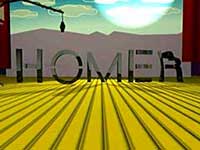
Showcasing the company's 3d animation and effects capabilities, this 12 minute reel showcases a diverse collection of commercials, music video sequences, television openings, feature film sequences, experimental inhouse projects, industrial films, character animation, motion capture and more.
Computer animation credits include Peter Conn, Michael Kory, Joe Alter, Kelly Wilcox, Larry Guterman, John Adamcyzk, Michael Parks, Doug Dooley and others
|
|
|
| Click image to open in YouTube |
|
|
Flying Logos, Inc.
|
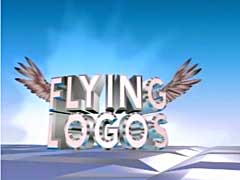
First shown at the 1989 Siggraph Electronic Theater to a rave response, this 2 minute humourous film went on to win several top computer graphic awards that same year including Niccograph of Japan.
With a voiceover soundtrack written by Peter Conn and animations assembled from various productions done during the previous year, the film unfolds as a client calls into Flying Logos, Inc. to have his logo visualized. In the course of the conversation, we see and hear the juxtaposition of the technical versus the anticipated, the imagination versus the possibility.
But more important than amusing audiences and winning awards, this landmark film marked the debut of the PC as a fully capable production system to do broadcast quality work, which up to then was only done by large companies with very expensive graphic workstations.
Computer animation credits include Peter Conn, Michael Kory, and Jim Hillin.
|
|
|
| Click image above to open in YouTube |
|
|
Abracadabra
|
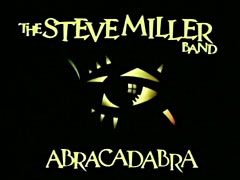
This music video, directed by Peter Conn for The Steve Miller Band and Capitol Records in 1982, is still shown today. The song became a #1 hit worldwide.
Nominated for the Best Director category at the first Music Video Awards, this film was truely magical. Done on a shoestring budget with no time to plan, the footage was shot on just 500 feet of 35mm film. One week of post production afforded the opportunity to use for the first time an inhouse developed 8-bit computer paint system. This paint system pre-dated any broadcast usage of pixel painting, a technique which is taken for granted today on most any personal computer.
Other credits include: The Mums (Roy Johns and Albie Selznick), Suzanne (Ashley) Trimble, Nina Lily, Alexandra Conn (baby), Brian Greenberg (cameraman), Larry Bridges (editor), and Paul Rother (software programmer).
|
|
|
| Click image above to open in YouTube |
|
|
Atomic Dog
|
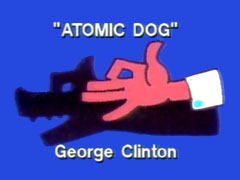
Directed by Peter Conn in 1983, the music video for the R&B smash "Atomic Dog" by George Clinton was never shown on MTV. It was made only a few months before Michael Jackson's big budget "Beat It" opened up the new music video channel to black artists. Nonetheless, it was selected by Rolling Stones critics as the Number Two Video of the Year. "Beat It" was Number One.
Utilizing the inhouse paint system, it creates a fictional videogame to complement a live action videogame world. Filmed downstairs from the offices of Homer & Associates on the old Columbia Studios lot in Hollywood, the multi-leveled glass rooms that became the game's playing field were old editing rooms from the days when film was nitrate based and highly flammable.
Other credits include: Russell Clarke (The Atomic Dog character) and Overton Lloyd (character animator), Jonathan Rogers (animator)
|
|
|
| Click image above to open in YouTube |
|
|
Sister of Pain - Vince Neil
|
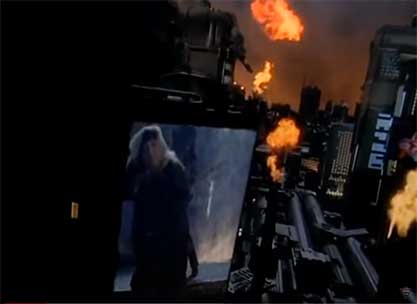 |
| Click image above to open new window in YouTube per Warner Bros Records |
Directed by Peter Conn in 1993, this music video was the launch vehicle for Vince Neil's solo career at Warner Records. Set in a "Blade Runner" type fantasy city, the girl in the control tower was Janine Lindemulder, a then hot porno star and a then girl friend of Vince.
The storyline where the girl clones herself and sends the clone out on a laser beam to where Vince and the band is playing was developed to show off the motion capture computer animation capabilities at Homer & Associates. This sequence was included in the prestigious Siggraph Electronic Theater later that year.
The entire production was done in an astonshing 28 days. Of course MTV then requested multiple edits before they would show it - something about the girl didn't sit well with them. The video was banned on MuchMusic in Canada. But to its credit, Mo Austin, President of Warner Records, said it was the most outstanding video in its class that he had ever seen.
Other credits include: Michael Kory (computer animation), Umberto Lazzari & Francesco (SuperFluo Motion Capture), Sam Nicholson (Stargate Digital who was the Director of Photography and made available his motion control stage and blue screen stage), Eileen Fields (Production Manager) |
|
|
|
|
Fleetwood Mac - Paper Doll
|
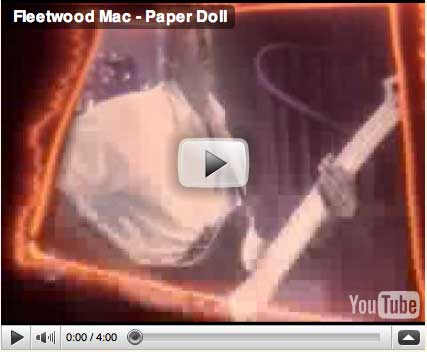
Click image above to open new window in YouTube per Warner Bros Records
|
Directed by Peter Conn in 1992, this video was a lot of fun to make. Dealing only with Mick Fleetwood who wanted the video to this song to be made from all their old videos for the retrospective album "25 Years - The Chain," I came up with the idea of projecting the old videos on bodies covered in white makeup then rephotographing them.
One interesting fact is that this video had the easiest approval of any FM video ever done at Warner Records. The reason for that came from the original design that there would be two levels of approvals, the first being an edit of the song using the old videos. This was circulated among the band members including Stevie Nicks and Christine McVie, who saw themselves and of course approved. The edit was then transferred to 16mm film for projection.
The other interesting fact is that the girl cast to be the human projection screen was the voluptuous Julie Strain, Penthouse Pet of the Year and famous B movie actress. Although never revealed fully in the video, she made for quite a screen.
|
|
|
|
|
Tom Waits - In the Neighborhood
|
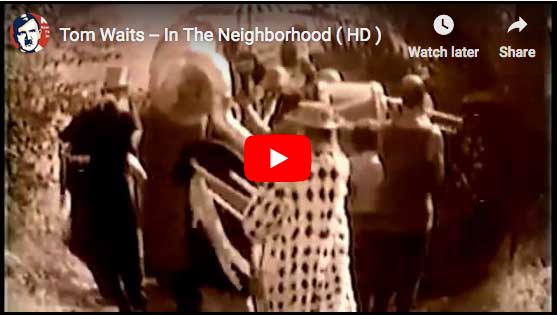 |
Directed by Peter Conn in 1983, this video went through some changes before it was released. Tom's managers at the time were trying to divert the video, and by the day of the shoot, which was done in an alley behind the house where Tom lived just north of downtown Los Angeles, relationships had deteriorated miserably between the production team and Tom. It climaxed about a week later when he and his managers came by to see the rough cut. They were shown an effect that had been done frame-by-frame to separate Tom from the background making him black and white and the rest color. Had they said to continue, the video would have established a visual look that was years ahead of the commercial world. Instead, they said to ship all the footage to New York where this edit was done with a cheesy fisheye video effect.
The Director of Photography and cameraman for the video was the wonderful Haskell Wexler, the famous cinematographer who had won an Oscar for Who's Afraid of Virgina Wolf? Haskell dealt quite well with the cantankerous Tom Waits on the day of the shoot. And interestingly enough, Tom called up about ten years later to apologize.
Other credits: members of the "Felliniesque marching band" (as it was put out for the casting call) were selected by Tom from a vast choice of eccentric characters who auditioned, and included, in addition to the giant and the midget, Roy Johns (a member of the Mums and in several other videos including Abracadabra), Jonathan Rogers (an animator friend who worked on Atomic Dog), and a doctor. |
|
|
|
|
Steve Miller - Bongo Bongo
|
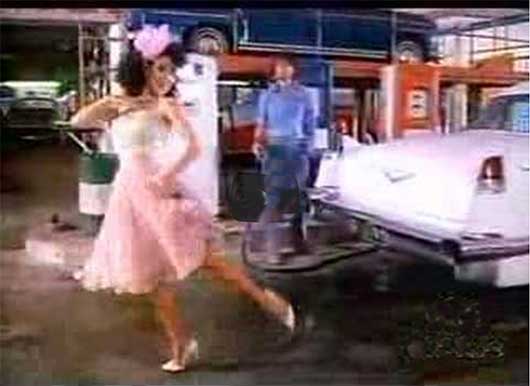
|
Directed by Peter Conn in 1985, this high production value video had very little exposure because the song did not do well on the radio. Shot in 35mm in at least 10 locations, the Betty Boop like dancer was played by Debby Samuels. The computer animations were one of the very first inclusions of 3d animation into a music video and were created on a Bosch 4000 which previously was used only for logo animations in video online facilities.
Other credits include: Brian Greenberg DP, the Mums (Roy Johns, Nathan Stein, and Albee Selznick) in various roles, and Michael Mandel (owner of I Love Juicy on Melrose and shown making the carrot juice in his restaurant). |
|
|
|
|
The Jacksons - Blame it on the Boogie
|
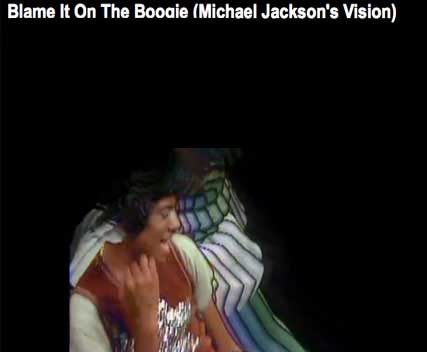
|
Directed by Peter Conn (and Nick Saxton) in 1978, this video was highly circulated at the time but then retired when Michael Jackson changed his physical appearance with the release of his first solo album. Included in the video in addition to Michael are Randy, Tito, Marlon, and Jackie. The video lag effect and particularly the shoe sequence spurned many imitations including a Tretorn shoe commercial for the Netherlands produced by Homer & Associates.
|
|
|
|
|
Al Dimeola - Sequencer
|
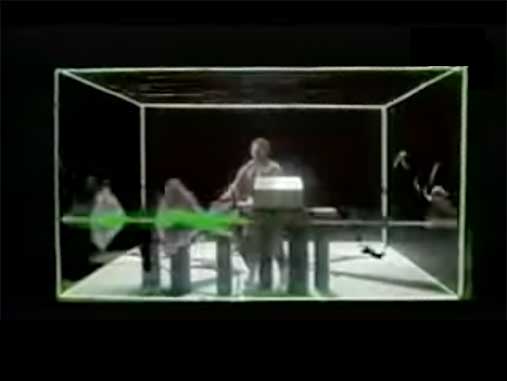
|
Directed by Peter Conn in 1982, the video featured a Fairlight computer which was a popular music sequencer used at the time. The room was constructed of real neon. There were some paint animation effects done inhouse on the same system used in Abracradra. Al Dimeola, who was Jazz Guitarist of the Year, liked the idea of sparring with his guitar in a pseudo martial arts fantasy.
Other credits include: Brian Greenberg DP, David Blum (editor) |
|
|
|
|
Stevie Wonder - Send One Your Love
|
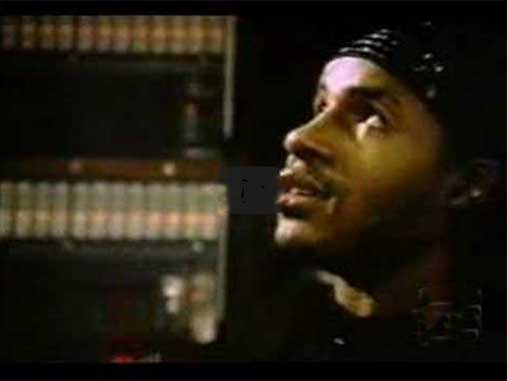
|
Directed by Peter Conn in 1979, the video featured footage of Stevie in a recording studio which was supplied by another filmmaker. We shot the slow motion roses and rose pedals falling and put the whole thing together. Evidently Stevie really liked it but it's not so clear how he came to that conclusion.
Other credits include: Michael Grunstein (editor) |
|
|
|